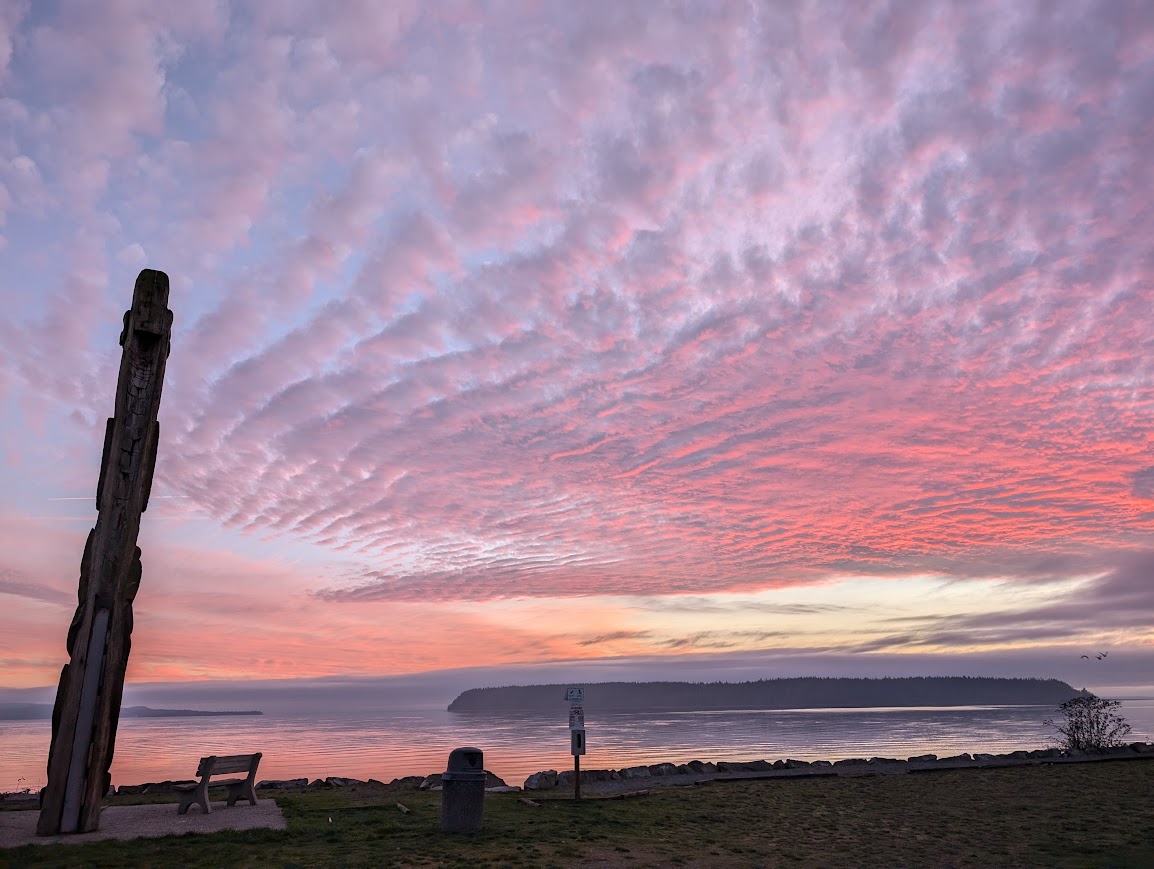Article by Jasmin Menendez
Wednesday, September 24, 2025
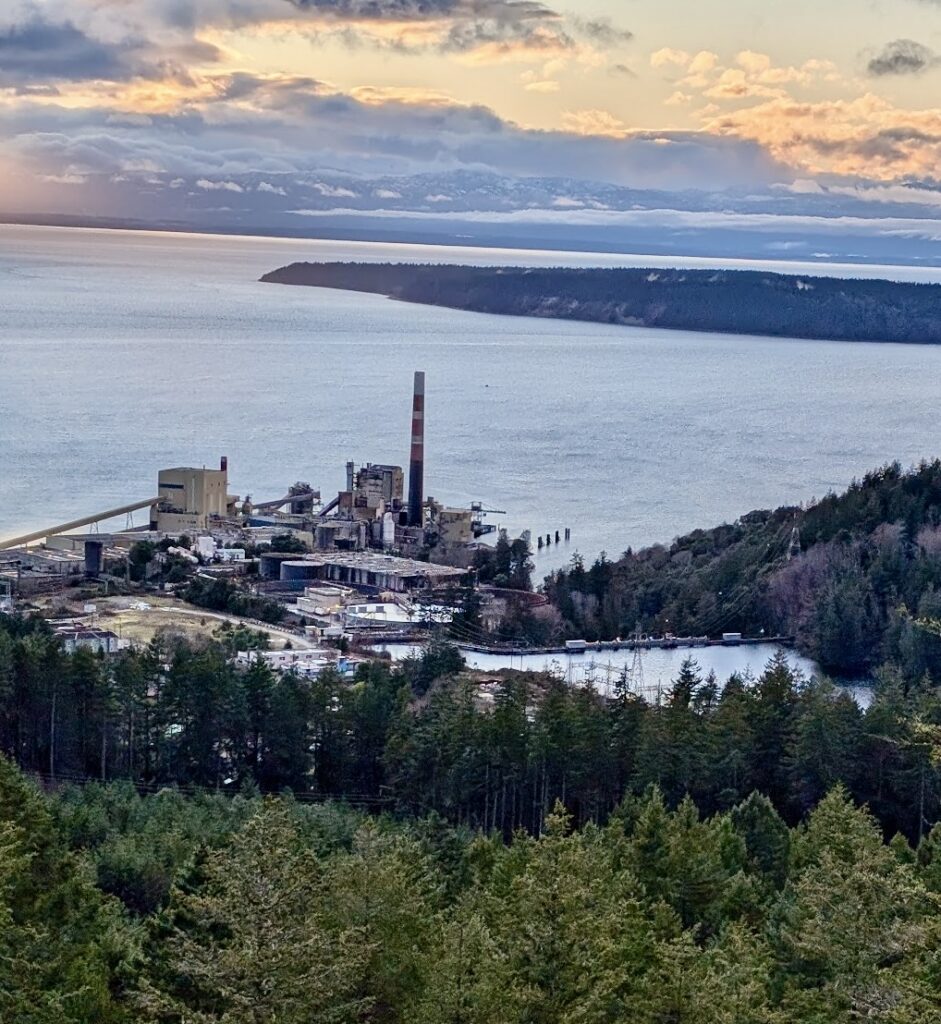
The Powell River dam and mill can be seen at the location of tiskwat, the traditional main Tla’amin village. (Photo by Jasmin Menendez, Dec. 26, 2024)
Listen to my interview with Tla’amin Nation Land Use Planner Marie-Gabrielle Bechard discussing the importance of tiskwat to Tla’amin and what’s currently happening at tiskwat:
Tla’amin Nation is facing a new fight to protect its territory from unchecked exploitation from multi-national corporations. The “Keep Our Power Local” campaign was launched in early September as a response to the application from the Powell River Energy Inc. (PREI), a subsidiary of global investment firm Brookfield, to the Canada Energy Regulator (CER) for a 30-year export permit for 100% of the energy produced by local dams to be sent to the U.S. In the qathet region of the upper Sunshine Coast, the PREI (Brookfield) operates andcontrols two dams on Powell Lake and Lois Lake. These dams control the water flow for six lakes and four rivers in the region, and the licences held by PREI mean that the company has a deep impact on the watersheds and ecosystems across Tla’amin territory, especially on flooded lands, salmon, and water levels. As highlighted by Hegus John Hackett’s letter to the CER, Tla’amin Nation’s interest in the application is “rooted in inherent rights to lands and resources and as a land owner at the power generation site with a potential interest in using the power generated by PREI.” Tla’amin Nation has been connected to tiskwat, where the Powell River dam now sits, since time immemorial, as this is traditionally the most important village site for Tla’amin people, who were displaced from this site due to colonialism. As Tla’amin has signed MOUs with BC, Canada, and PREI, it is essential that Tla’amin’s voice is heard and respected and that Brookfield’s application to export 100% of the hydropower to the U.S. for 30 years be refused.
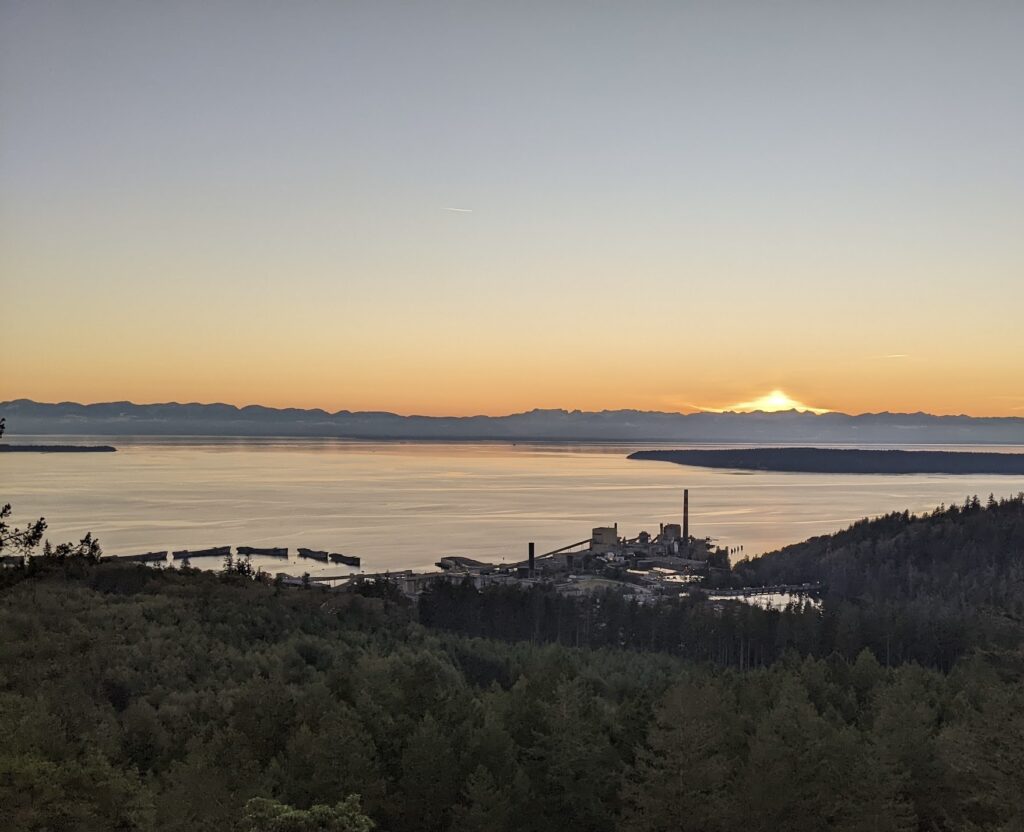
The sun sets on the Salish Sea with the Powell River dam and mill in the foreground showcasing the landscape level impact of these constructions. (Photo by Jasmin Menendez, Oct. 28, 2023)
Tla’amin Connection to tiskwat
Due to colonialism and a history of deception and dispossession, Tla’amin people have been removed from tiskwat, despite it being one of the most important village sites. It is known through oral history, archeological findings, and accounts from early settlers that tiskwat (big river) was the main village site of Tla’amin people, which was stolen through colonisation and never turned into a reserve. Before reserves were designated in Tla’amin Territory, a vast tract of land covering tiskwat and a significant portion of what is now the City of Powell River were illegally leased and sold as Lot 450. This sale was illegal as the law at the time did not allow Indigenous villages to be sold. The sale of Lot 450 occurred before the establishing a reserve site at tiskwat. Ever since this deep injustice, Tla’amin people have been fighting for recognition of their rightful place at tiskwat.
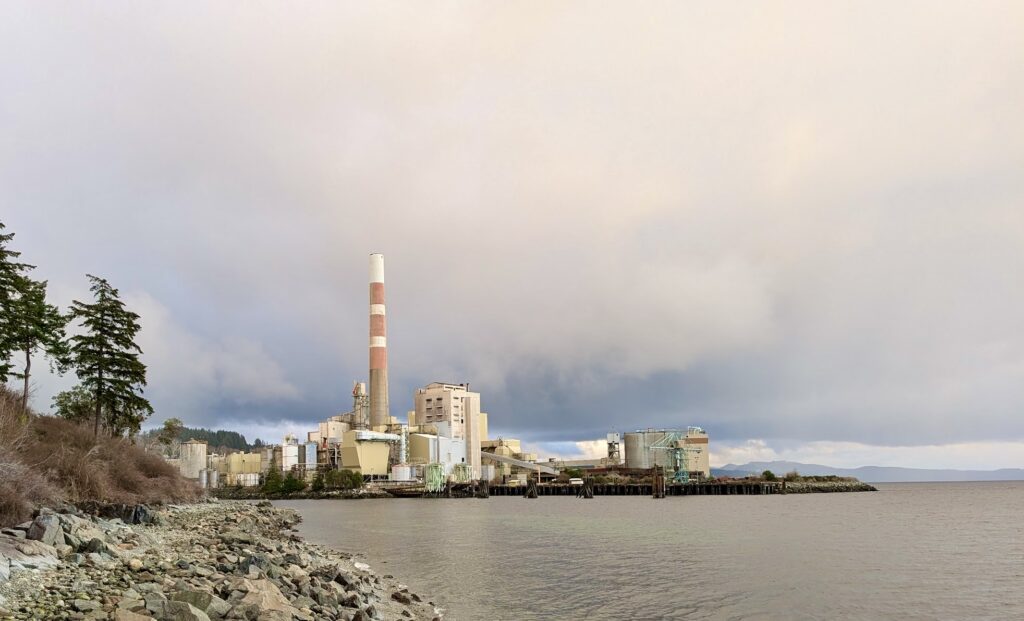
The Powell River Mill can be seen at the mouth of the river where the Tla’amin Village site of tiskwat once existed alongside a historically major salmon run, which can now no longer move beyond the dam. (Photo by Jasmin Menendez, Feb, 2, 2025)
Tla’amin MOUs with BC and Brookfield
In 2023, Tla’amin signed a MOU with the province titled yiχmɛtštəm tiskʷat (we are going to take care of tiskwat).This MOU solidified a mutual understanding of Tla’amin connection to the site and highlighted three areas for collaboration, including environmental stewardship, economic development, and Tla’amin site repossession.Earlier the same year, Tla’amin Nation signed an MOU with PREI (Brookfield) to explore collaboration and potentially mutually-beneficial land and resource management opportunities. PREI’s decision to apply to export 100% of the hydroelectricity produced on Tla’amin lands goes against the previously signed MOU between the Nation and the company. PREI’s application even goes as far as stating that the MOU is a demonstration of consent from the Nation, which is heavily criticized in the Nation’s submission to the CER.
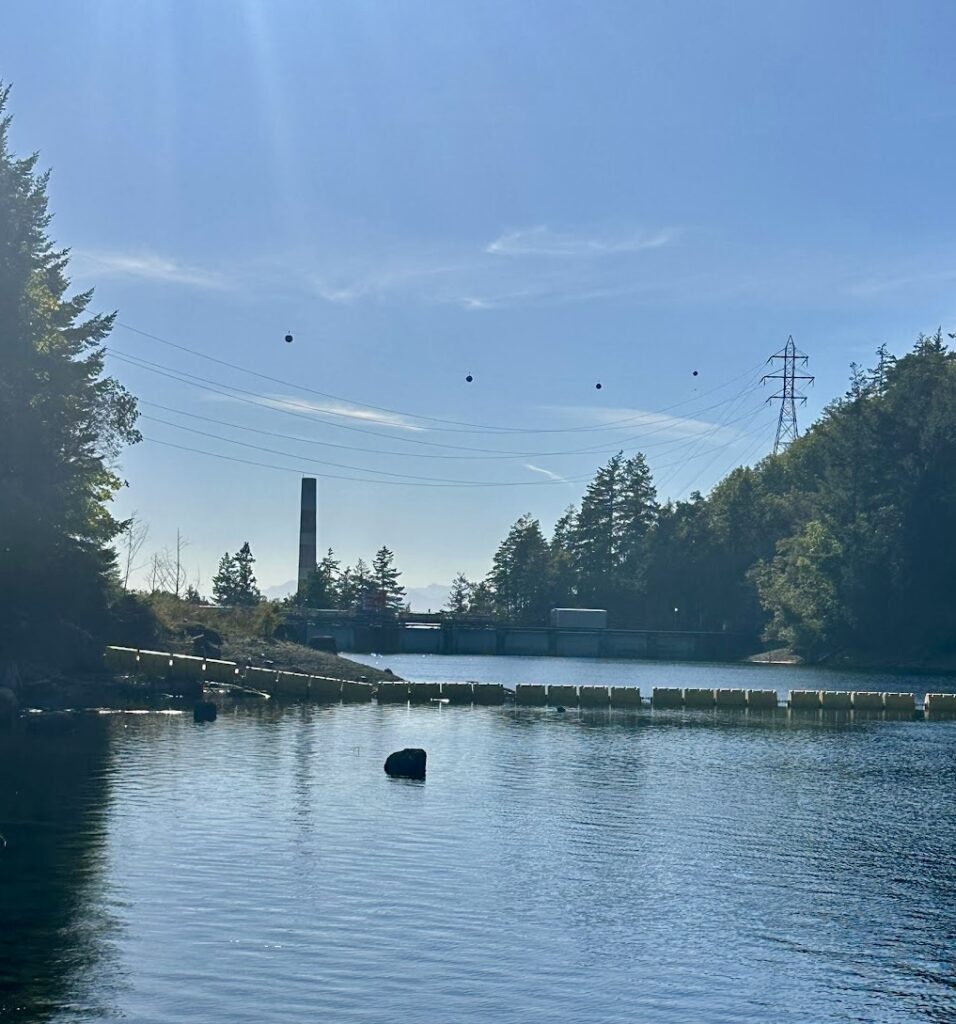
Image showing the dam and booms on the river side of the dam.(Photo by Jasmin Menendez, Sept. 24, 2025)
Supporting Tla’amin
Despite Tla’amin Nation making advances towards reclaiming its rightful place as a decision-maker for tiskwat, the proposal by PREI (Brookfield) to send 100% of the hydropower generated in the region to the U.S. for 30 years is putting at risk efforts to reclaim rights to tiskwat. Due to these risks, Tla’amin Nation and other local stakeholders have launched the Keep Our Power Local” campaign to share information and ask the public to submit a comment to the CER about the proposal. Members of the public are encouraged to support Tla’amin and take action by sending a comment to the CER against PREI’s proposal by September 25th using the link provided on the campaign’s website.
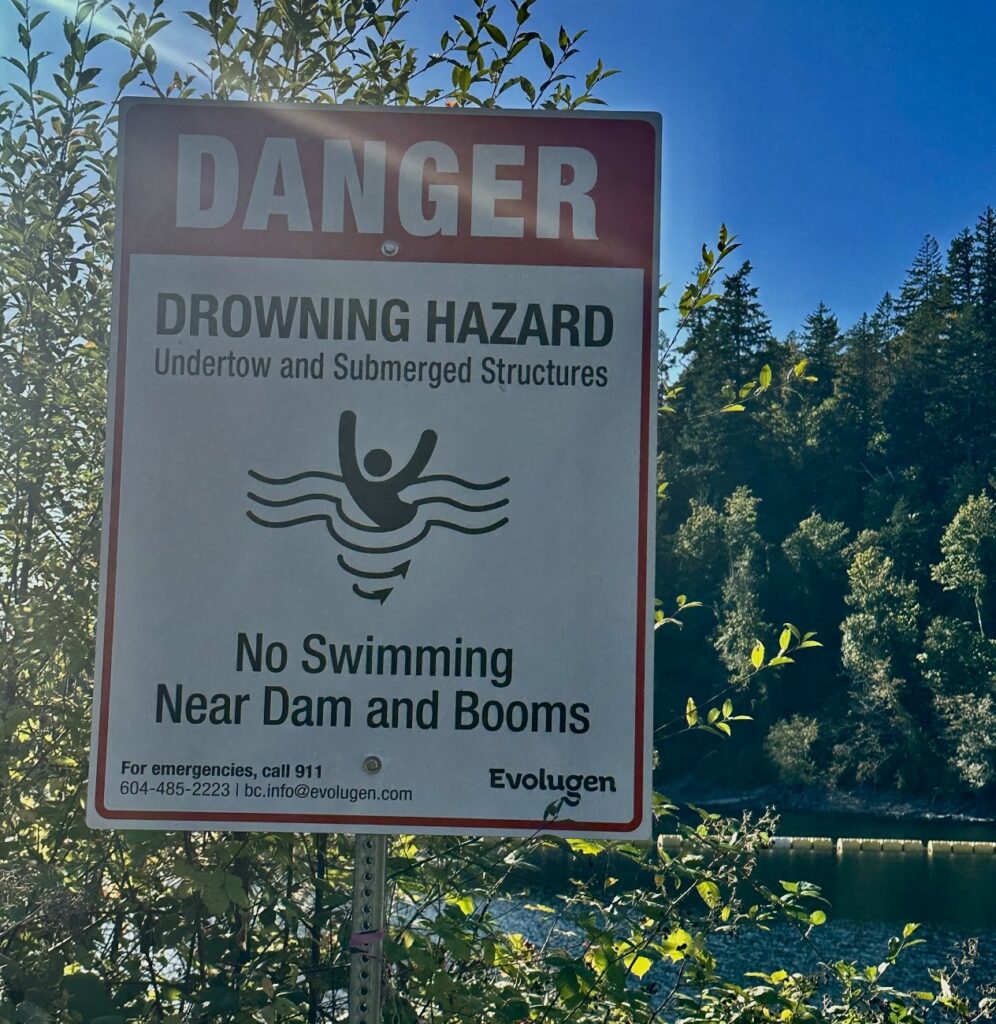
Image showing a warning sign set up by Evolugen (operators of the dam) to warn swimmers of the risk of getting close to the dam. (Photo by Jasmin Menendez, Sept. 24, 2025)
Tiskwat Video: The following video showcases the importance of tiskwat and its waters to the Tla’amin people through showing images of water in Tla’amin territory and listening to the words of the poem tiskwat. I read this poem by Joshua Degroot to show how colonization used the removal of Indigenous people from their lands through reserves and Residential Schools to build the dam and mill. By building the dam and mill, colonial stories erased the presence of Indigenous people from the land but now, the truth is coming out and it is time for settlers to recognize these truths and right the wrongs of the past.
